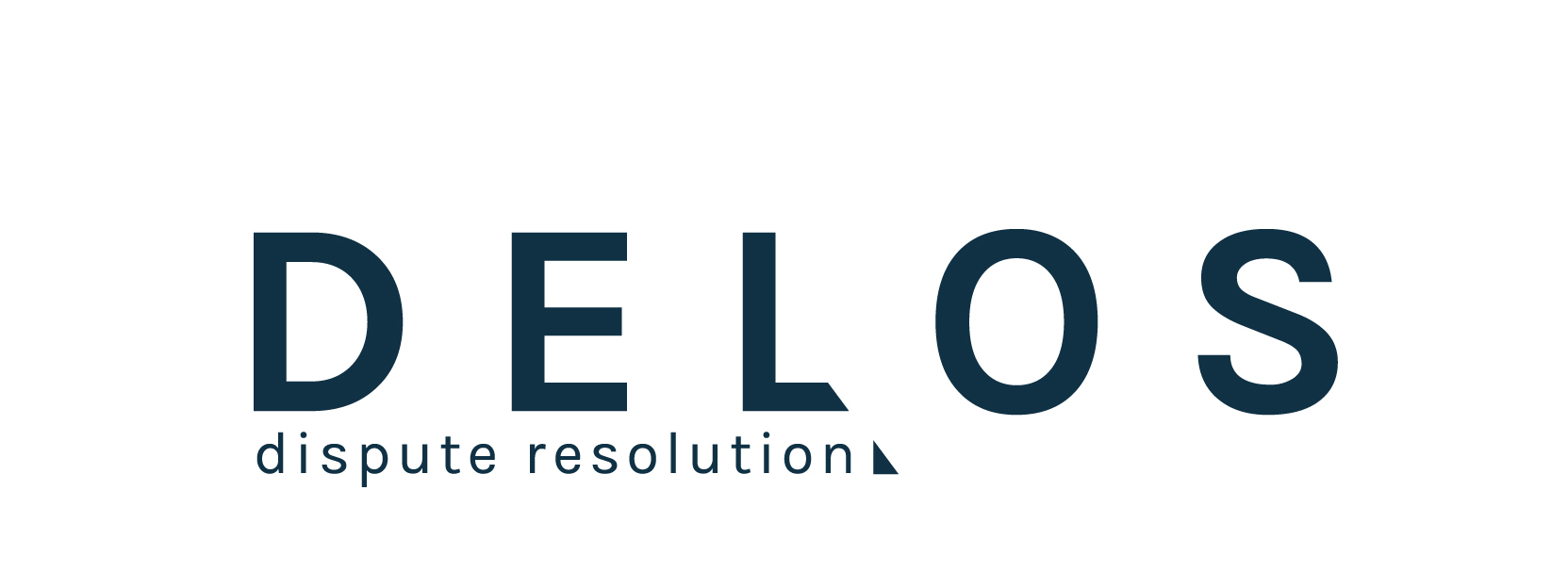
In this course, you will gain an advanced understanding of interest and exchange rates. The course will discuss pre-award and post-award interest, compounded and simple interest, and exchange rates.
By completing this course, you can prepare to take the Delos Certificate on Advanced Damages & Valuation Issues.
This course has been designed by Roula Harfouche, Independent Expert (London). The course is part of the Delos Damages MOOC.
You need to be logged in as a Delos annual member to access the course contents. You can rate this course and provide feedback by filling out this short form.
Download course slides (PDF) here.
- Accruals principle: It requires accounting transactions to be recorded in the time period in which they occur, regardless of when the actual cash flows resulting from the transaction occur. It also records the expense of acquiring an asset over its useful life rather than in the period in which the expense is incurred by recognising a depreciation expense. See further Course 1.2
- Actual Situation: It reflects what has actually occurred, it is inherently more certain than the But For Situation, which considers what might have been. The actual situation usually corresponds to an actual loss: if well documented, any disagreement on this part of the damage assessment should be limited. See further Course 1.3
- Balance sheet: Financial statement that provides a snapshot of a firm’s financial position (i.e., company’s assets, liabilities and shareholder equity) at a specific point in time (e.g., financial year end). See further Course 1.2
- Bases of value: “Bases of value (sometimes called standards of value) describe the fundamental premises on which the reported values will be based. It is critical that the basis (or bases) of value be appropriate to the terms and purpose of the valuation assignment, as a basis of value may influence or dictate a valuer’s selection of methods, inputs and assumptions, and the ultimate opinion of value.” See further Course 1.5
- Beta: A measure of volatility or “systematic risk” of a security (or group of securities) compared to the market. While the levered beta is the beta given its anticipated leverage ratio, the unlevered beta assumes a leverage ratio of zero (all-equity financed). See further Course 1.6, Course 2.2
- Book value: Represents the net asset value used as a proxy for carrying value of the subject asset. See further Course 2.3
- But-For Situation: It should be constructed based on the most probable course of events had those acts not been committed, taking into account the parties’ independent and rational decision making. It also must consider legitimate and lawful conduct available to the respondent. See further Course 1.3
- CAPEX: Major upfront capital expenditures on long-term assets. See further Course 1.6
- Cash: Cash and cash equivalents held by the company. See further Course 2.3
- Cash surplus: Cash considered to be surplus to ongoing operating requirements. See further Course 2.3
- Change in Working Capital: Adjustment to revenues and costs to reflect cash timing (collection/payment). See further Course 1.6
- Compensatory damages: The object of an award for compensatory damages is to put the injured party in the same position as it would have been in, had it not sustained the wrong. See further Course 2.6
- Compound interest: Applied to the principal amount and accrued interest. See further Course 2.4
- Conservatism (or prudence) principle: Gains should only be recognised if they are certain, but potential losses should be recognised immediately. See further Course 1.2
- Consistency principle: Once an organisation has adopted a particular accounting principle or approach to accounting, that method must continue to be adopted on an ongoing basis. This consistency of approach ensures that a company’s performance can be compared year on year without changes in accounting policy impacting the comparable figures. See further Course 1.2
- Corporate income tax: Payments to tax authority based on taxable income. See further Course 1.6
- Cost approach: An investor will pay no more for an asset than the cost of an identical or equivalent one. It provides an indication of value using the economic principle that “a buyer will pay no more for an asset than the cost to obtain an asset of equal utility, whether by purchase or by construction, unless undue time, inconvenience, risk or other factors are involved.” See further Course 1.3, Course 1.4
- Cost of capital: The overall cost that a company incurs in obtaining financing, both through debt and equity. See further Course 1.6
- Cost of debt: Expected return that investors require from an investment in that firm’s debt. Cost of debt is what it needs to be discounted at expected debt cash flows to get back to the value of debt. See further Course 2.2
- Cost of equity: The price charged by investors for bearing the risk that the company’s future cash flows may differ from what they anticipate when they make the investment.
- Country risk premium: Risk premium at which the discount rate should be increased to reflect the risk of investing in certain, particularly emerging market, countries. The increase is typically estimated as the sovereign spread. See further Course 2.2
- Damages framework: Reparation must, as far as possible, wipe out all the consequences of the illegal act and reestablish the situation which would, in all probability, have existed if that act had not been committed. See further Course 1.3
- DCF: Discounted Cash Flow is the present value of the expected cash flows that the business will generate in the future. See further Course 1.6
- Debt service: Consider existing debt, as well as any new debt. Calculated as the sum of principal payments and issuances, plus the interest payments. See further Course 1.6
- Debt tax shields: Reductions in taxable income from use of debt interest as an allowance deduction. See further Course 1.6
- Depreciation & amortization: Methods to expense the value of long-term assets over their lifetime. See further Course 1.6
- Discount rate: This rate is used to calculate the present value of an expected benefit tomorrow, as well as to quantify risk and opportunity cost of funds. See further Course 1.6
- EBITDA: Acronym for Earnings, Before, Interest, Taxes, Depreciation, and Amortisation. It is a profitability measure of a company’s operations as it excludes the effects of indebtedness (interest), state-mandated payments (taxes), and costs required to maintain its asset base (depreciation and amortisation). See further Course 1.5
- Econometrics: The application of statistical methods to study economic relationships. See further Course 2.6
- Enterprise value: The value of a business to all capital providers (shareholders and lenders). See further Course 1.5
- Equitable value: The estimated price for the transfer of an asset between identified knowledgeable and willing parties that reflects the respective interests of those parties. See further Course 1.3
- Equity value: The value of a business to all of its equity shareholders. See further Course 1.5, Course 2.3
- ERP: Equity risk premium. See “Market risk premium”.
- Exit multiple: Multiples valuation as at the end of forecast period, typically based on EBITDA (or an alternative). See further Course 2.1
- Factual causation: Causal relationship between an action and a claimed harm required by legal liability and compensatory damages, and universally accepted as the “but-for” test. When multiple factors may have caused an alleged harm, and data is available on these factors, statistics and econometrics are powerful tools for establishing and measuring factual causation. See further Course 2.6
- FCFE: Free Cash Flow to Equity Measures the “free” cash to equity holders after accounting for operating and investing expenses, as well as interest and debt repayments. FCFE is calculated as FCFF less Debt Repayments, less Interest Payments. See further Course 1.6
- FCFF: Free Cash Flow to the Firm measures the cash generated for all stakeholders (both debt and equity), after accounting for operating and investing expenses. FCFF is calculated as Revenues, less Operating Expenses, less Income Tax, less Capital Expenditure, less Change in Working Capital. See further Course 1.6
- Fixed costs: Those that do not change with revenues or the quantity of goods produced/sold. See further Course 1.6
- GAAP: Generally Accepted Accounting Principles. See further Course 1.2
- Gordon growth model: A valuation model that equates a stock’s price to the present value of all future dividends, assuming a constant growth rate. It can also be used to assess the terminal value of a business given specific assumptions on growth and return requirements. See further Course 2.1
- Guideline public companies: “The guideline publicly-traded method utilises information on publicly-traded comparables have the same or similar operations to the subject asset to arrive at an indication of value.” See further Course 1.5, Course 2.3
- Guideline transactions: “The comparable transactions method, also known as the guideline transactions method, utilises information on transactions involving assets that are the same or similar to the subject asset to arrive at an indication of value.” See further Course 1.5, Course 2.3
- IFRS: International Financial Reporting Standards. See further Course 1.2
- IVSC: International Valuation Standards Council. It is an independent, not-for-profit organisation committed to advancing quality in the valuation profession. See further Course 1.5
- Income approach: The value of an asset reflects the future cash flows that the asset holder will receive. The most common implementation of the income approach is the Discounted Cash Flow (DCF) Method. See further Course 1.3, Course 1.6
- Leverage: The ratio of debt funding to equity funding. It considers debt and equity. See further Course 1.2
- Leverage ratio (forward-looking): The proportion of the firm’s capital structure that will be accounted for by debt. See further Course 2.2
- Liquidity: Liquidity is the rate at which a stock can be bought/sold in the market without significantly affecting its price. Market liquidity is different than accounting liquidity, i.e., the ability of a company to meet short-term obligations. See further Course 1.2, Course 2.3
- Market approach: The market approach to business valuation uses price information about comparable businesses to estimate the value of the target business. “The market approach provides an indication of value by comparing the asset with identical or comparable (that is similar) assets for which price information is available.” It is based on the principle of substitution, i.e., a prudent buyer will pay no more for an asset than the cost to acquire a substitute asset with the same utility. See further Course 1.5, Course 2.3
- Market capitalisation: Derived as the multiplication of market price and number of shares as at a particular date. See further Course 2.3
- Market risk premium: Difference between the expected return of the market portfolio or overall market less the return offered on a risk-free rate investment. See further Course 1.6, Course 2.2
- Market share: The percentage of total revenues or sales in an industry that is attributable to a specific company or product. It can be thought of as a driver of cashflows, or as a cross-check to financial forecasts based on other drivers. See further Course 2.1
- Market value: The estimated amount for which an asset should exchange on the valuation date between a willing buyer and a willing seller in an arm’s length transaction, after proper marketing and where the parties had each acted knowledgeably, prudently and without compulsion. See further Course 1.3, Course 1.5, Course 2.3
- Mitigation: A respondent is not liable for harm suffered by claimant to the extent that it could have been reduced by claimant taking reasonable steps. However, a claimant is typically entitled to recover costs reasonably incurred in attempting to reduce harm. A damages calculation should therefore consider what the claimant could have done, rather than the mitigation steps it actually performed (if any). See further Course 1.3
- Multiple: It is determined by the process of one number being divided by another number, to give a relative measure. For valuation using the market approach, a valuer will use a key financial statistic of the company to determine the multiple. The multiple then becomes a standardised valuation metric to allow comparisons between comparable assets. “The market approach often uses market multiples derived from a set of comparables, each with different multiples. The selection of the appropriate multiple within the range requires judgement, considering qualitative and quantitative factors.” See further Course 1.5
- Net debt: The value of short- and long-term debt items less any cash or cash equivalents. See further Course 1.5, Course 2.3
- Non-operating assets and liabilities: Assets and liabilities which are not used by the company during the normal course of its operation. See further Course 2.3
- Non-systematic risk: Risk that can be diversified away. See further Course 2.2
- NPV: Net Present Value is the sum of discounted cash flows. See further Course 1.6
- OPEX: Operating expenses. See further Course 1.6
- Operating value: The EV of a business less the value of any non-operating assets and liabilities. See further Course 1.5, Course 2.3
- Present value: It involves the opportunity of an invested money, and the uncertainty of a dollar tomorrow compared to a dollar today. See further Course 1.6
- Profit and loss account: Financial statement that summarises a company’s performance over a specific period of time (e.g. over the past year). See further Course 1.2
- Replacement cost: Amount of money a participant must pay so as to replicate the utility of the asset. See further Course 1.4
- Reproduction cost: Amount of money a participant must pay so as to replicate the exact physical properties of the asset. See further Course 1.4
- Revenues: Usually Price x Quantity. However, modelling varies across industries. See further Course 1.6
- Risk-free rate: Rate of return on a security that has no default risk and no reinvestment risk. See further Course 1.6, Course 2.2
- Simple interest: Applied to the principal amount only. See further Course 2.4
- Size premium: Risk premium that reflects the additional risk of an investment in small firms compared to an investment in otherwise identical large firms. See further Course 2.2
- Sovereign spread: Difference between the yield on US treasuries and yield on US-denominated sovereign bonds issued by the country in question. See further Course 2.2
- Stable capital structure: Proportions of debt and equity remaining constant through time means that if, e.g., firm performs better than expected and value increases, it will raise more debt and/or repurchase equity. See further Course 2.2
- Statistics: The study of collecting, analysing and presenting quantitative data. See further Course 2.6
- Systematic risk: Risk that cannot be diversified away, and the only risk for which investors should be compensated for. See further Course 2.2
- Terminal value: It captures the value of any cashflows generated by the business beyond the explicit forecast period, in perpetuity. See further Course 2.1
- Total enterprise value: See “Enterprise value”. See further Course 2.3
- Valuation: generation of future profits/cash flows to the owner; it accounts for risks, uncertainties and volatility associated with the cash flow. It also accounts for the time value of money over the economic life of the asset. It is usually not appropriate to use subsequent information. See further Course 1.3
- Valuation date: Every valuation is performed as of a point in time. In assessing damages, the choice of valuation date can be a key issue, as damages may be claimed based on expectancy or outcome. Expectancy (“ex ante”): Damages are assessed at the date of the breach, using information known or knowable at the time, with subsequent unexpected events being disregarded. Outcome (“ex post”): Damages are assessed as at the date of the analysis (and can be subsequently updated), using all information available. See further Course 1.3
- Variable costs: Those that change in proportion to revenues or quantity of goods produced/sold. See further Course 1.6
- Wasted costs: Type of compensatory relief in breach of contract and investor state matters –sometimes referred to as Reliance Damages. See further Course 1.4


